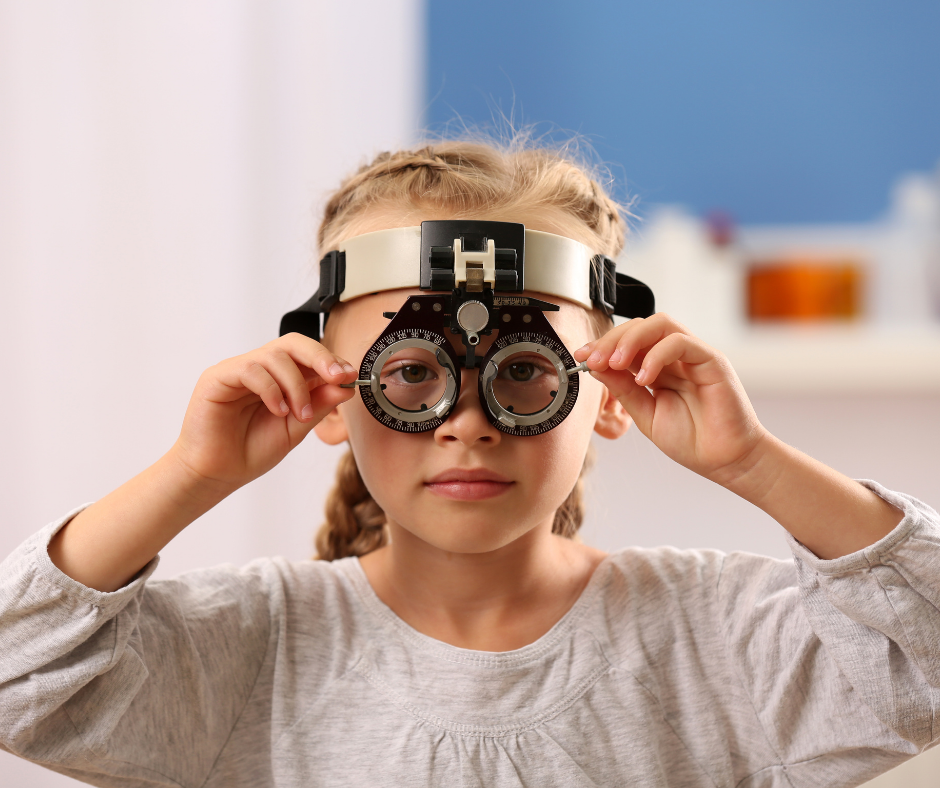
Eye exams aren’t just for adults, they’re important for kids too. We asked our expert, Ophthalmologist Dr. Nick E. Frisard, some common questions about pediatric eye health, and what you, as parents, can do to help!
When would you recommend a child gets their first eye exam? What can you expect?
Assessment of visual health begins shortly after birth. It is recommended that all newborns have a visual screening performed by a doctor or a healthcare professional. A visual screening checks for basic indicators of eye health such as the pupils, alignment of the eyes, and the way light reflects off of the eye. A visual screening can be performed by a pediatrician, family physician, ophthalmologist, or other trained healthcare professional. If a vision screening is abnormal your child should be referred to an ophthalmologist or optometrist for a comprehensive eye exam. Visual screenings are simple noninvasive exams that do not require drops. Recent technological advancements have made automated vision screenings possible through the use of special cameras. These photoscreenings are highly effective at detecting eye diseases or the need for glasses, and may be performed at your child’s school or pediatrician’s office.
How often should a child or an adult have eye exams?
A visual screening should be repeated around 12 months by a pediatrician at the child’s well visit. Between the ages of 3-5 your child’s vision and eye alignment should be checked by a pediatrician, ophthalmologist, or optometrist once the child is able to read an eye chart. For adults, if your eyes are healthy and your vision is good you should have a complete eye exam by your ophthalmologist once in your 20s and twice in your 30s.
What are the first signs of vision problems?
The first signs of vision problems in children include squinting, a misaligned eye, abnormal eye movements, chronic tearing, a white instead of black pupil, constant eye rubbing, or holding reading material too close to the face.
Is there anything that can be done to reverse vision damage?
Amblyopia is the most common cause of vision damage in children. Amblyopia develops because one or both eyes do not see clearly or are misaligned. If amblyopia is corrected early, usually before age 11 to 13, it can be reversed and vision restored. Less common childhood eye diseases such as glaucoma cause visual damage that is more difficult to reverse and the primary goal is early detection so that damage can be prevented through medications and surgery.
How does going “paperless” in classrooms affect vision? What can be done to prevent eye strain due to technology? In turn, has there been an uptick in vision issues due to heavy tech use during the pandemic?
In today’s fast paced world, children are using technology earlier and more frequently, and parents often inquire about the effect of this technology on their child’s vision. In addition, there has been an increase in complaints of “eye strain” with increased use of electronics due to the coronaviruses pandemic. There are a number of steps that parents can take to reduce eye strain from electronics. First, try to increase the distance from your eyes to the screen to about arm’s length. In order to see an object close to your face a small muscle inside of the eye must squeeze. the closer the object is to your face the harder that muscle will work. Sitting very close to a computer screen or tablet for long periods of time can produce unnecessary strain on the eyes. Next, frequent breaks from electronics are important. Parents should remember the 20-20-20 rule which is a reminder that for every 20 minutes spent looking at a screen you should look 20 feet away for 20 seconds. This will allow the eye to periodically relax and result in less complaints of eye strain. Finally, reducing the screen’s brightness and using a matte screen filter to reduce glare can be helpful. There has been much talk recently about blue light and electronic devices. While it is true that chronic exposure to strong blue light from the sun can lead to eye diseases, the blue light emitted from electronic screens is much weaker and has not been proven to be harmful to your vision.

